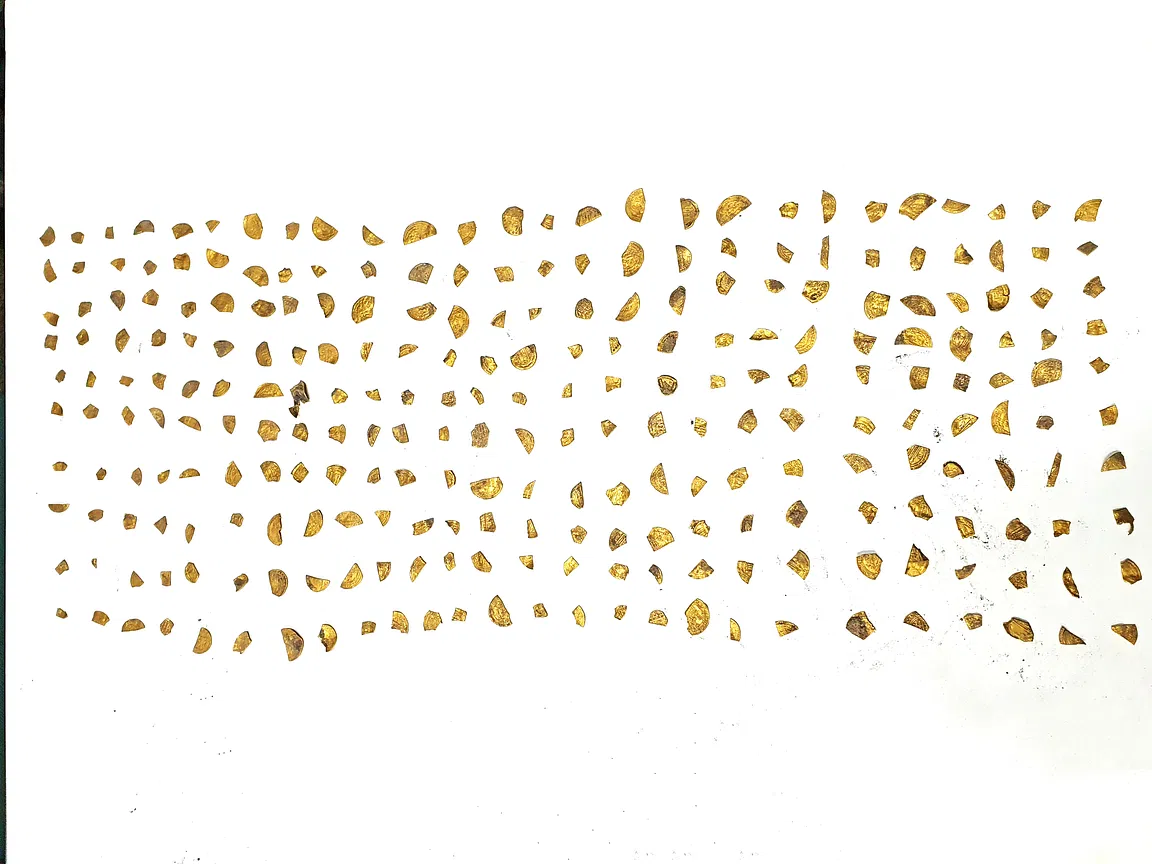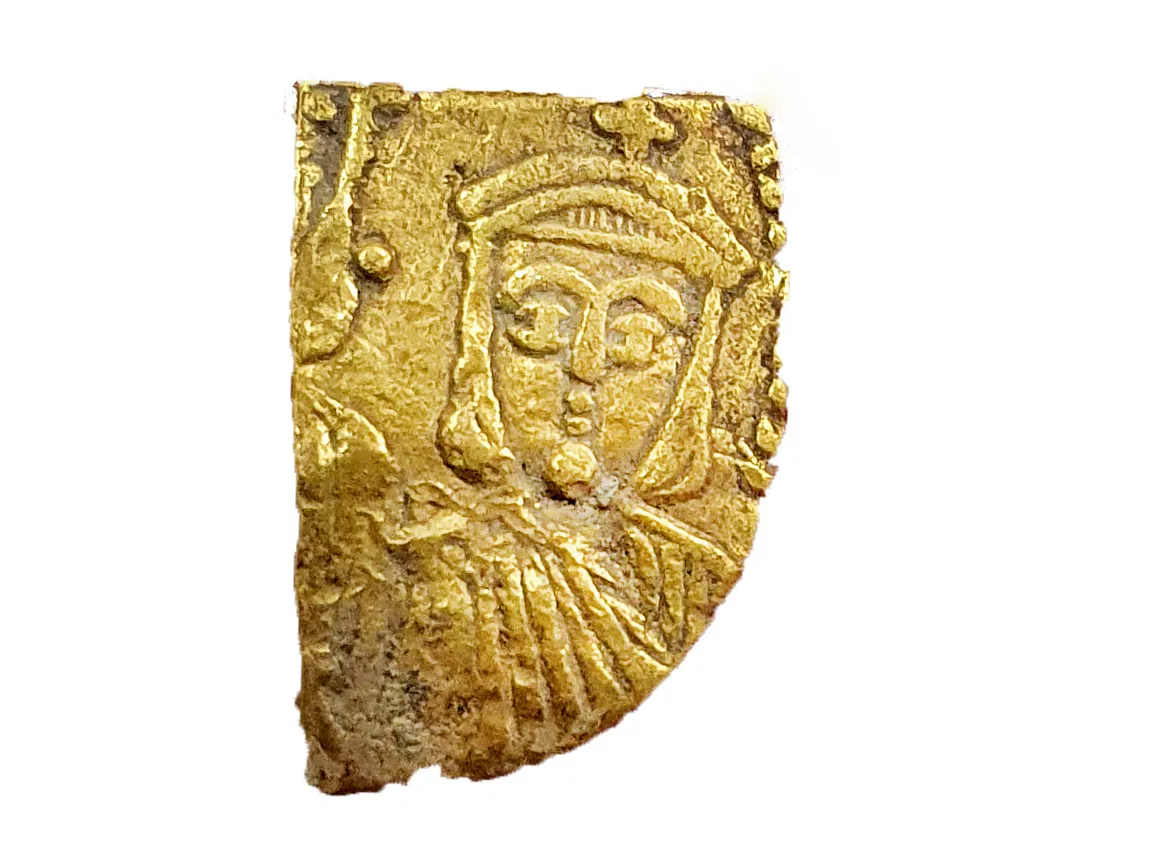The coins mostly date back to the Abbasid era and were buried in a clay jar. They were discovered at an archaeological dig near the town of Holon in central Israel.
“The person who buried this treasure 1,100 years ago must have expected to retrieve it, and even secured the vessel with a nail so that it would not move,” says Liat Nadav-Ziv and Dr. Elie Haddad of the Israel Antiquities Authority, who directed the dig. “We can only guess what prevented him from returning to collect this treasure. Finding gold coins, certainly in such a considerable quantity, is extremely rare. We almost never find them in archeological excavations, given that gold has always been extremely valuable, melted down and reused from generation to generation. The coins made of pure gold that does not oxidize in air, were found in excellent condition, as if buried the day before. Their finding may indicate that international trade took place between the area’s residents and remote areas.”
The archaeologists note that it is extremely rare to find artefacts from the Abbasid period in excavations in Israel – especially gold coins. The hoard consists of whole gold dinars and about 270 small gold cuttings – pieces of coins cut to serve as ‘small change’. The cutting of gold and silver coins was a regular feature of the monetary system in Islamic countries after the 850s, with the sudden disappearance of bronze and copper coins.

This is one of the earliest known caches from this period (end of the 9th century) found in the country. The coins are made of pure gold – 24 carats. The total weight of the hoard is about 845 grams of pure gold – a significant amount of money in those days. For example, with such a sum, a person could buy a luxurious house in one of the best neighborhoods in Fustat, the enormous wealthy capital of Egypt in those days. From an initial examination of the coins, most of them date to the end of the 9th century CE.
One of the cuttings is an exceptional rare piece, never found in excavations in Israel: a fragment of a gold solidus of the Byzantine emperor Theophilos (829 – 842 CE), minted in empire’s capital of Constantinople. The appearance of this small Byzantine coin fragment in an Islamic coin hoard is rare material evidence of the continuous connections between the two rival empires during this period.

According to Dr. Robert Kool, a coin expert at the Israel Antiquities Authority, “this rare treasure will certainly be a major contribution to research, as finds from the Abbasid period in Israel are relatively few. Hopefully the study of the hoard will tell us more about a period of which we still know very little.”

Top Image: Photo by Yoli Schwartz, Israel Antiquities Authority